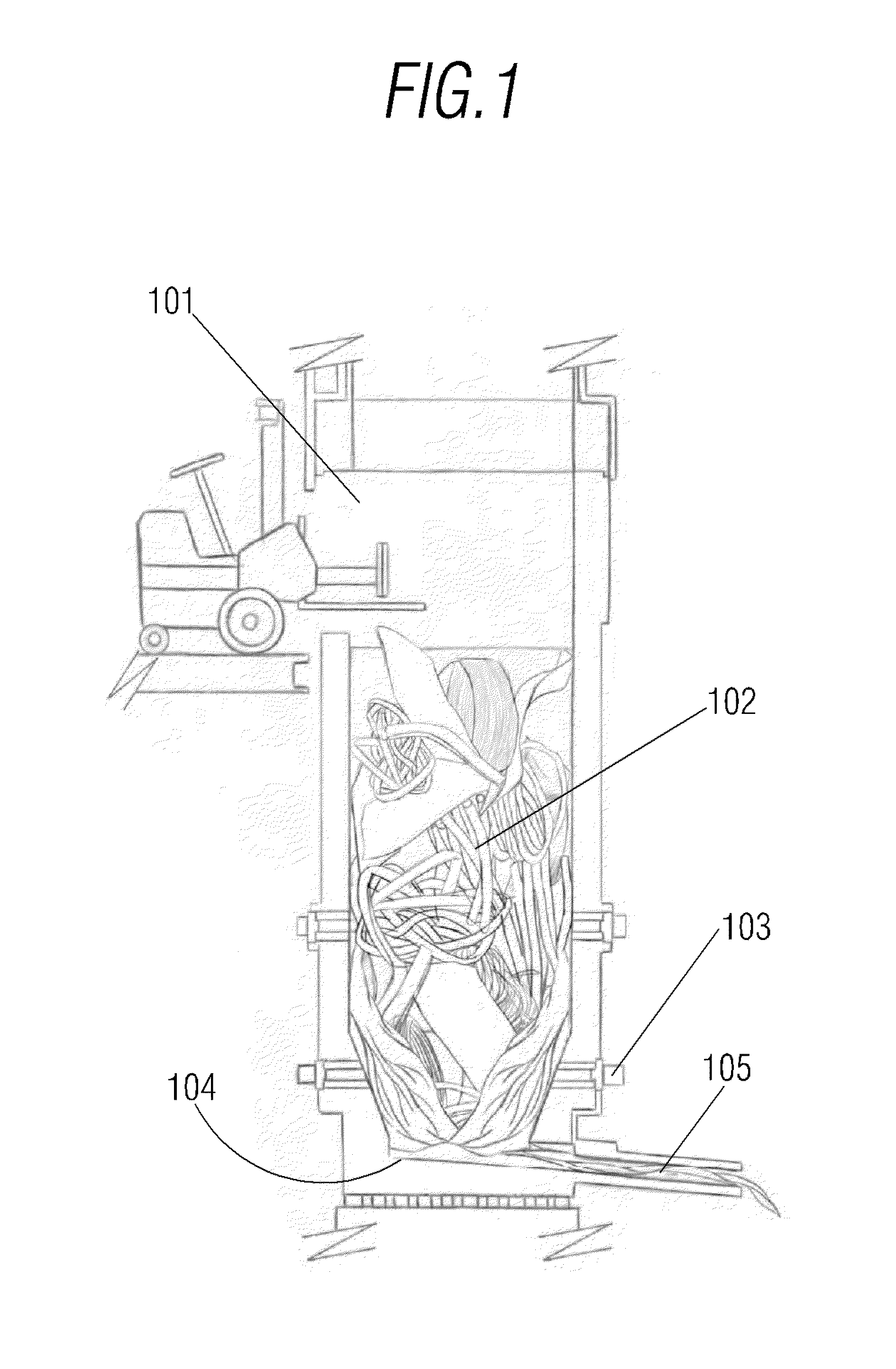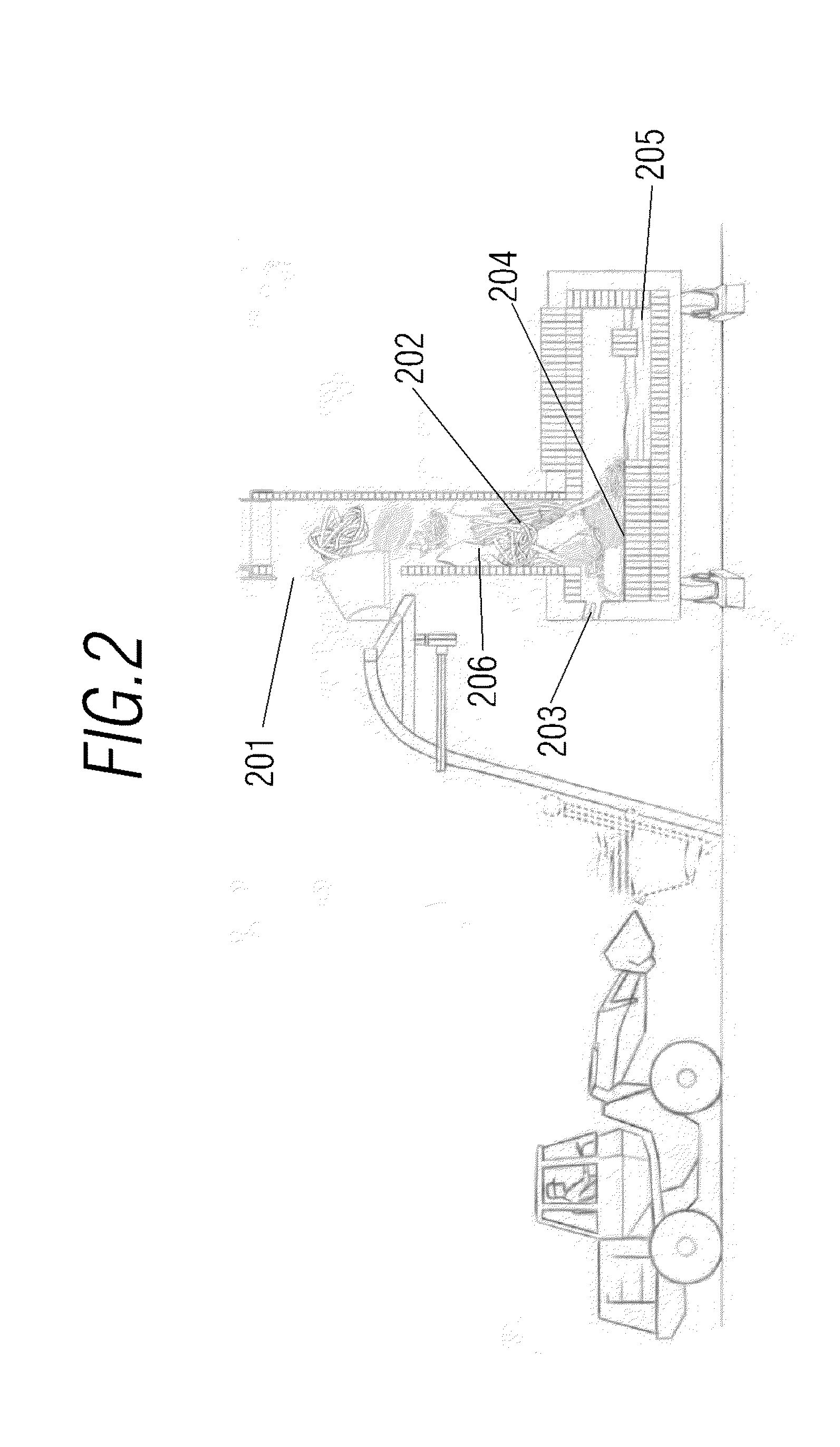System and Method for Charging a Furnace for Melting and Refining Copper Scrap, and Furnace Thereof
a technology for refining furnaces and copper scrap, which is applied in the direction of furnaces, furnace components, lighting and heating apparatus, etc., can solve the problems of difficult collection of combustion gases that exit through the charging door, significant decrease in intended energy performance, and low energy efficiency, so as to facilitate the installation of secondary emissions extraction conduits, facilitate the insertion of copper scrap, and improve the energy performance of the process
- Summary
- Abstract
- Description
- Claims
- Application Information
AI Technical Summary
Benefits of technology
Problems solved by technology
Method used
Image
Examples
Embodiment Construction
[0033]The present invention has been developed for the purpose of providing a system and method for charging a furnace for melting and refining copper scrap, as well as the furnace for melting and refining copper scrap, that overcomes the aforementioned drawbacks, moreover offering other additional advantages that will become clear in light of the accompanying description below.
[0034]Therefore, one object of the present application is a system for charging a furnace for melting and refining copper scrap, comprising at least one shredder intended to receive copper scrap to be refined, associated in turn with screening means intended to receive copper scrap that has been shredded by said shredder, wherein said screening means are linked to at least one vibrating feeder table through continuous conveyance means, wherein said vibrating feeder table is configured so as to allow shredded copper scrap to be put into the furnace.
[0035]These characteristics give rise to system and method for...
PUM
| Property | Measurement | Unit |
|---|---|---|
| length | aaaaa | aaaaa |
| length | aaaaa | aaaaa |
| width | aaaaa | aaaaa |
Abstract
Description
Claims
Application Information
 Login to View More
Login to View More - R&D
- Intellectual Property
- Life Sciences
- Materials
- Tech Scout
- Unparalleled Data Quality
- Higher Quality Content
- 60% Fewer Hallucinations
Browse by: Latest US Patents, China's latest patents, Technical Efficacy Thesaurus, Application Domain, Technology Topic, Popular Technical Reports.
© 2025 PatSnap. All rights reserved.Legal|Privacy policy|Modern Slavery Act Transparency Statement|Sitemap|About US| Contact US: help@patsnap.com



